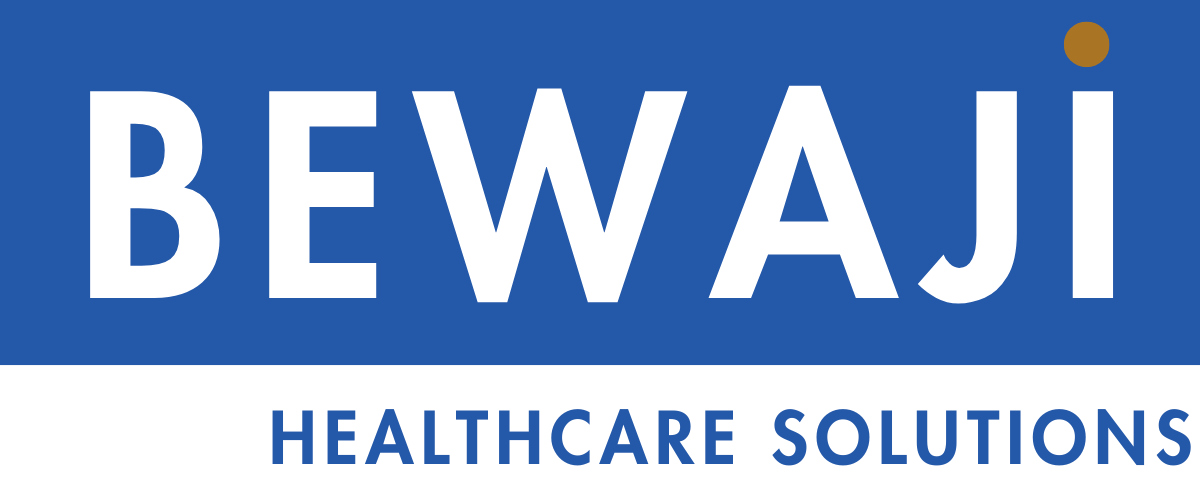Technology is indispensable in today’s healthcare environment, making IT systems’ reliability crucial. Service-level agreements (SLAs) are vital to ensure healthcare IT systems deliver consistent, high-quality performance, supporting better patient care. This article examines the critical importance of SLAs in healthcare IT, examining their components, benefits, common pitfalls, and best practices for effective management and negotiation.
Introduction
Imagine a scenario where a hospital’s Electronic Health Record (EHR) system fails during peak hours, leaving healthcare professionals without access to essential patient information. Such a situation underscores the severe consequences of unreliable IT infrastructure in healthcare. As healthcare providers increasingly rely on digital solutions, ensuring healthcare IT system reliability becomes indispensable for maintaining high standards of patient care.
Ensuring Healthcare IT System Reliability through Effective SLAs is a necessity. Well-structured SLAs achieve this by clearly defining service expectations, ensuring accountability, and enabling proactive IT management. They provide a framework that protects both parties from misunderstandings and legal disputes, ensuring seamless operations and improved patient outcomes.
Understanding Service-Level Agreements (SLAs)
Definition and Purpose
Service-level agreements (SLAs) are formal contracts between healthcare providers and technology vendors that outline the expected level of service. These agreements include performance metrics for healthcare IT, remedies for non-compliance, and detailed roles and responsibilities. SLAs ensure reliable healthcare technology systems, such as EHRs and telemedicine platforms.
SLAs are not just about setting expectations but are essential for maintaining reliable healthcare technology. They ensure that services such as EHR systems and telemedicine platforms operate effectively, supporting the goal of high-quality patient care. SLAs help healthcare providers avoid disruptions and maintain continuous operations by specifying detailed performance metrics.
Given that healthcare IT system reliability directly impacts patient care and safety, SLAs are essential for maintaining high standards and ensuring that IT systems function as required.
SLAs in healthcare play a critical role in maintaining reliable systems such as EHRs and telemedicine platforms, thus avoiding scenarios that could disrupt patient care. By establishing clear expectations and providing a framework for conflict resolution, SLAs help maintain trust and cooperation between healthcare providers and technology vendors.
Critical Components of Effective SLAs
Services and Metrics
An effective SLA should include a detailed service description, performance metrics tailored to healthcare IT, and compliance requirements. For instance, an SLA for an EHR system should specify uptime percentages, response times for IT support, and other critical performance metrics. These metrics ensure the healthcare IT system remains reliable and supports the provider’s operational needs.
Specific metrics, such as IT system uptime, compliance with regulations, and performance metrics for healthcare IT, are essential in healthcare. These metrics ensure that technology systems operate effectively, supporting high-quality patient care and meeting regulatory requirements.
Management Elements
SLAs must also encompass management elements, including measurement standards, reporting processes, dispute resolution mechanisms, and procedures for updating the agreement. In healthcare, these elements are critical for ensuring service providers meet the stringent regulatory and operational requirements for patient safety and data security.
This is particularly important given the frequent changes in healthcare technology and regulatory standards, which necessitate regular updates to service agreements.
Benefits of SLAs
Accountability
SLAs establish clear responsibilities for service providers and healthcare providers, crucial for maintaining healthcare IT reliability. By defining these roles, SLAs ensure that service providers are held accountable for maintaining the agreed-upon performance levels, thus supporting reliable healthcare technology and preventing disruptions in patient care.
Well-defined SLAs ensure that technology vendors are responsible for delivering reliable healthcare technology, thus preventing system failures that could impact patient care.
Clear Expectations
Clear performance metrics in SLAs help manage healthcare workflows by providing a shared understanding of service expectations. This clarity is essential for avoiding misunderstandings and ensuring healthcare providers can rely on their technology systems to support their operations effectively.
Having clear expectations helps streamline operations and prevent issues arising from unclear or unmet service standards. SLAs provide a framework that ensures all parties understand their responsibilities and the expected performance levels.
Conflict Resolution
Predefined processes for addressing issues within SLAs help prevent conflicts, which is vital in healthcare, where system downtime can have profound implications for patient care. With these processes in place, healthcare providers can quickly and effectively resolve issues, ensuring that critical services remain uninterrupted.
Customer Satisfaction
SLAs ensure a specified level of service essential for customer satisfaction. By setting clear service expectations and providing remedies for non-compliance, SLAs help maintain a high standard of service, thus, ensuring that technology systems perform reliably and meet the needs of healthcare providers.
Legal Protection
SLAs offer legal protection by clearly outlining the responsibilities and expectations of both parties. This is particularly important in healthcare, where non-compliance with service standards can have significant legal and financial implications. SLAs help protect healthcare providers and technology vendors in legal disputes by providing a clear framework for service delivery.
Types of SLAs
Operational SLA
An Operational Service Level Agreement (SLA) delineates an organization’s internal services and performance standards, ensuring each department understands its responsibilities. It includes specific commitments on service quality, response times, and accountability for operational efficiency. This formal document is a vital tool for internal process management, enhancing overall organizational functionality.
Service-Based SLA
A Service-Based SLA standardizes the service levels for a specific service provided to all customers. This agreement defines the scope of service, performance metrics, availability, and support mechanisms applicable to all clients using the service. It ensures consistent service quality and establishes clear expectations across a broad customer base, facilitating streamlined service delivery and support.
Customer-Based SLA
A Customer-Based SLA is tailored to the needs of a particular customer or a specific group of customers. It details customized service commitments, performance criteria, and support arrangements, addressing unique customer requirements. This type of SLA enhances customer satisfaction by providing personalized service levels that align with individual client expectations, fostering stronger business relationships.
Multi-Level SLA
A Multi-Level SLA integrates various layers of service agreements, each targeting different service levels or customer segments within an organization. It typically includes corporate-level standards, customer-specific agreements, and detailed service-level commitments. This structure ensures comprehensive coverage of service obligations, allowing flexibility and specificity in addressing diverse service requirements and customer needs.
Key Considerations for SLAs
Selecting Metrics
Choosing the right metrics is crucial for the success of an SLA. Metrics should motivate desirable actions, reflect factors within the service provider’s control, and be easy to collect and analyze. They should also have a balanced scope to prevent data overload or gaps and be based on a proper baseline to set realistic and attainable performance levels.
Clear Definitions
SLA definitions should accurately represent the intended service levels and be clear to all parties involved. Clear and well-defined SLAs are essential in healthcare, where precise definitions are crucial for maintaining compliance and avoiding misunderstandings.
Common SLA Mistakes and How to Avoid Them
Failure to Establish SLAs Upfront
Not agreeing on SLAs before starting the service can lead to misunderstandings and operational issues. Establishing SLAs at the outset is crucial to ensure clear expectations and avoid potential conflicts. For instance, when implementing new healthcare IT solutions, it is essential to have SLAs in place to define service expectations and ensure the reliability of the systems.
Ambiguous SLAs
Unclear SLAs can create confusion and administrative burdens. It’s essential to strike a balance by setting realistic and clear SLAs focusing on critical service areas without overwhelming staff.
Misalignment
Not understanding the provider’s perspective can lead to impractical SLAs that do not align with the healthcare provider’s operational needs. Ensuring that SLAs are aligned with the provider’s goals and objectives is important to support effective service delivery.
Viewing SLAs as Static
SLAs should not be viewed as static documents. They need to be updated regularly to reflect changing needs and environments. In healthcare, where technology and regulations frequently change, regular SLA updates are essential to ensure they remain relevant and effective.
Best Practices for Negotiating and Managing SLAs
Proactive IT Management
Regular reviews and updates of SLAs are essential to keeping pace with technological advancements and changing healthcare requirements. Proactive management ensures that SLAs continue to effectively support the healthcare provider’s operational needs.
Proactive IT management ensures that SLAs are always up-to-date and aligned with the provider’s operational goals. By regularly reviewing and updating SLAs, healthcare providers can ensure that their IT systems remain reliable and support effective service delivery.
Compliance and Security
SLAs are crucial in ensuring compliance with healthcare regulations, such as HIPAA, and protecting patient information. SLAs help safeguard sensitive patient data and maintain regulatory adherence by defining apparent compliance and security requirements.
Case Study: Improving EHR Uptime with Effective SLAs
Scenario
A client facing frequent EHR system downtimes implemented a tailored SLA with their technology vendor. The SLA included specific metrics for system uptime and response times for support requests, ensuring that the EHR system would be reliable and available. This focus on improving EHR uptime helped the hospital enhance the reliability of its healthcare IT systems.
In this case, the hospital’s implementation of a tailored SLA helped to reduce system downtimes and improve the reliability of their EHR system. By setting clear expectations for system uptime and support response times, the SLA provided a framework for ensuring that the EHR system remained operational and supported the hospital’s needs.
Conclusion
SLAs are crucial for setting expectations, ensuring service quality, and protecting both parties in a vendor-customer relationship. In healthcare, where system reliability directly impacts patient care, tailored SLAs are essential for improving operational efficiency and compliance. By regularly reviewing and updating SLAs, healthcare providers can ensure that their IT systems remain reliable and support critical operations.
SLAs tailored to healthcare IT needs can significantly enhance service quality and operational efficiency, ensuring better patient care and compliance. Healthcare providers are encouraged to assess their current SLAs and consider revisions or new agreements to meet their operational and regulatory needs better.
In conclusion, the role of SLAs cannot be overstated. They provide a framework for ensuring that critical IT systems remain operational, supporting the delivery of high-quality patient care. By setting clear service expectations and providing a mechanism for resolving disputes, SLAs help maintain trust and cooperation between healthcare providers and their technology vendors. As healthcare continues to evolve and become more reliant on technology, the importance of well-crafted SLAs will only grow, ensuring that healthcare providers can deliver the best possible care to their patients.



